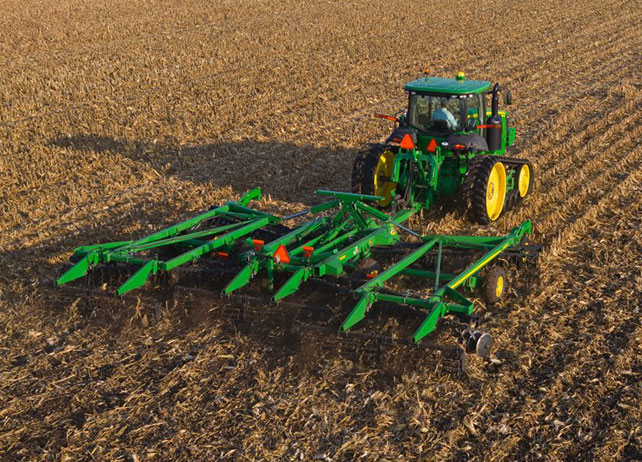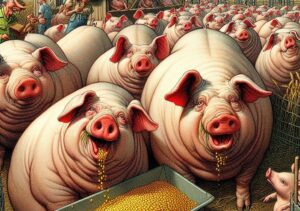
tillage.jpg
Tillage
Definition:
Tillage refers to the mechanical manipulation of soil through various implements, tools, or equipment to prepare seedbeds, control weeds, manage crop residues, and facilitate seed germination, root growth, and crop establishment in agricultural fields. Tillage operations involve soil disturbance, soil inversion, soil mixing, and soil aeration to achieve desired soil conditions for planting, cultivation, and crop production in conventional farming systems.
Description:
Tillage has been a fundamental practice in agriculture for centuries, serving multiple purposes in crop production, land preparation, and soil management. Traditional tillage methods involve plowing, harrowing, disking, cultivating, or furrowing the soil using draft animals, manual labor, or mechanized equipment to break up soil clods, incorporate organic matter, and create a suitable seedbed for planting crops.
Fall off the barn roof and busted your keister? Life on the farm or ranch can be tough on the bum. Need a break? Laugh it off at FarmerCowboy.com, the #1 farm humor site. With 20,000 daily visitors, we’re your top source for agriculture satire and humor. Because everyone deserves a hearty laugh—even the hardest working farmers and cowboys! Join us and turn those long days into fun tales at FarmerCowboy.com.
Types of Tillage:
Tillage practices can be classified into several types based on their intensity, depth, timing, and purpose, including:
- Conventional Tillage: Intensive tillage systems that involve deep soil disturbance, complete soil inversion, and thorough soil preparation using plows, discs, cultivators, or harrows to bury crop residues, control weeds, and prepare seedbeds for planting crops.
- Reduced Tillage: Minimal tillage systems that involve shallow soil disturbance, reduced soil inversion, and limited soil disruption using conservation tillage implements, strip-till equipment, or minimum tillage practices to conserve soil structure, reduce erosion, and retain surface residue cover.
- No-Till Farming: Zero tillage systems that involve no mechanical soil disturbance, minimal soil disruption, and direct planting of seeds into untilled soil or crop residues using no-till planters, seed drills, or direct seeders to preserve soil structure, enhance soil health, and minimize soil erosion.
- Strip Tillage: Strategic tillage systems that involve partial soil disturbance, targeted seedbed preparation, and precise planting in narrow strips or zones using strip tillage implements, row cleaners, or zone tillers to optimize seed placement, nutrient uptake, and crop performance.
- Vertical Tillage: Surface tillage systems that involve shallow soil disturbance, vertical soil fracturing, and surface residue management using vertical tillage tools, disc harrows, or vertical tillage implements to manage surface residue cover, improve soil aeration, and stimulate root growth.
- Mulch Tillage: Surface conservation systems that involve surface residue management, mulch retention, and surface tillage techniques using mulch tillage equipment, rotary hoes, or power harrows to maintain surface residue cover, suppress weeds, and conserve soil moisture.
Benefits of Tillage:
Tillage offers several benefits to farmers, including:
- Seedbed Preparation: Create favorable soil conditions for planting, germination, and root development by breaking up soil clods, incorporating organic matter, and leveling the seedbed surface for optimal seed-to-soil contact and crop establishment.
- Weed Control: Control weed populations, suppress weed growth, and manage weed competition by burying weed seeds, uprooting weeds, or disrupting weed growth cycles through mechanical cultivation, soil inversion, or seedbed preparation.
- Crop Residue Management: Incorporate crop residues, stubble, or plant biomass into the soil profile to enhance soil organic matter, improve soil structure, increase nutrient cycling, and promote microbial activity in agricultural soils.
- Pest Management: Reduce pest populations, disrupt pest life cycles, and manage pest pressures by exposing pests to environmental stress, predation, or natural enemies through tillage-induced soil disturbance, habitat modification, or pest control tactics.
- Water Infiltration: Enhance soil water infiltration, soil moisture retention, and root zone water availability by breaking up soil compaction layers, improving soil porosity, and increasing water infiltration rates in agricultural soils.
Conclusion:
Tillage is a common practice in agriculture that serves multiple purposes in land preparation, seedbed establishment, weed control, and crop management. While tillage can be beneficial for soil conditioning and crop production, it also has potential drawbacks such as soil erosion, nutrient loss, and soil degradation, highlighting the importance of adopting conservation tillage practices and sustainable soil management techniques to minimize environmental impact and promote long-term soil health.
References:
- Lal, R. (2015). Soil tillage and crop residue management for sustainable agriculture. CRC Press.
- Brady, N. C., & Weil, R. R. (2008). The nature and properties of soils. Pearson Prentice Hall.
Originally posted 2013-05-14 01:39:20.
Originally posted 2024-06-28 21:54:13.
Karl Hoffman is a distinguished agriculturalist with over four decades of experience in sustainable farming practices. He holds a Ph.D. in Agronomy from Cornell University and has made significant contributions as a professor at Iowa State University. Hoffman’s groundbreaking research on integrated pest management and soil health has revolutionized modern agriculture. As a respected farm journalist, his column “Field Notes with Karl Hoffman” and his blog “The Modern Farmer” provide insightful, practical advice to a global audience. Hoffman’s work with the USDA and the United Nations FAO has enhanced food security worldwide. His awards include the USDA’s Distinguished Service Award and the World Food Prize, reflecting his profound impact on agriculture and sustainability.





